Classroom Hall
1st Floor Artwork
View, 2014
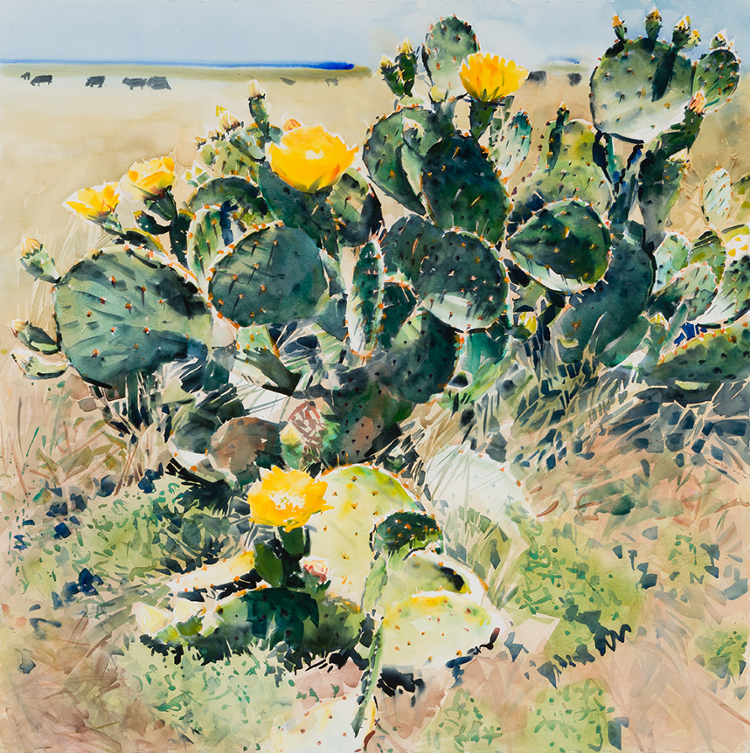
The Work of Brad Braune
West Texas native, Brad Braune, honed his inherited talent as a child while painting alongside his artist grandmother. He worked as an architect for some of San Antonio’s most prestigious firms, later designing the inaugural poster for the Texas Folklife Festival in 1981. Braune resides in San Antonio, continuing to paint and teach watercolor painting.
"In my effort to help them students understand and trust the process of planning, timing, and layering, we are totally in the moment as we work. We are not concerned about the end result or whether anyone will be impressed by what we do. Yes, we are struggling most of the time, but we are enjoying and fascinated by the process. We are truly focused on the journey. I thought about how this relates to the way I try to live my life.… I chose to focus on the process.” --- Brad Braune
Brad Braune (American, b. 1951)
View, 2014
Watercolor on paper
Unsigned
45 x 45 inches
“This watercolor was painted in honor of my paternal uncle Alvin Edward Braune, who passed away in 2014. It is a view across the landscape of my family ranch that has been in our family for four generations. The first Braune family emigrated from Germany to Geronimo, Texas (between New Braunfels and Seguin) in the late 1800’s. Two Braune brothers from that original family married two sisters from another German family (Roessling, also from New Braunfels). The two couples traveled to West Texas, near Abilene around 1900 and established the Braune Ranch.
The nearest town to the family ranch is View, Texas. The painting is titled View for the name of the town as well as it being a view across the landscape that will always be in my memory.” --- Brad Braune
Aqueduct Espada Mission
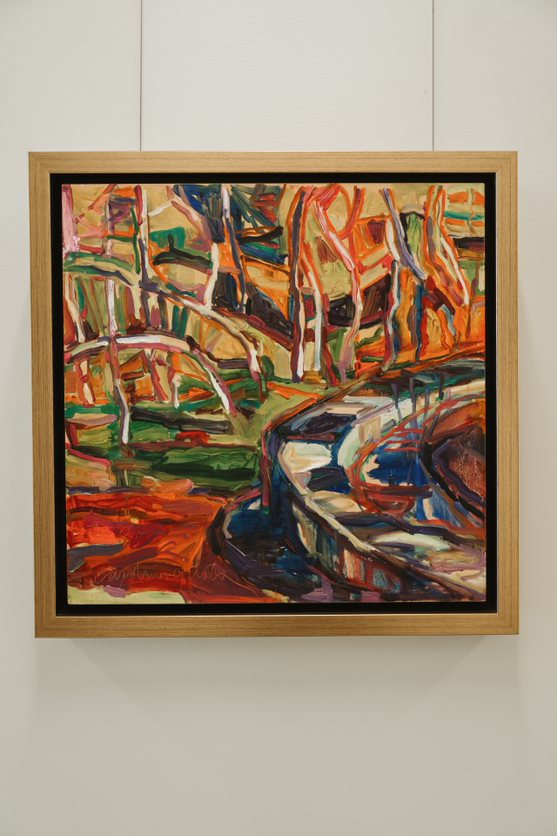
The Works of Carolina G. Flores
“The colors in my work are vibrant, pure; fresh from the tube. Going back to west Texas (home) family portraits, highway landscapes and neighborhoods fill my canvasses. There, in these portraits and landscapes, are the stories I want to tell with an emotion of color and line.”
“The flowers are an extension of my love of nature, color and movement. Whether store bought or grown in the garden, the brush moves quickly, capturing their dance before the petals fall.” --- Carolina Flores
Carolina G. Flores (American, 1948)
Aqueduct Espada Mission
Oil on canvas
Signed l.r.
24 x 18 inches
Though not typical of Carolina Flores’s palette, the tonalities in this piece are somewhat somber. Trees surrounding Mission Espada’s Aqueduct are depicted in cool tones contrasting what appears to be a warm sunset piercing through them, transporting the viewer to the solitude of that place.
Aqueduct Espada Mission 2
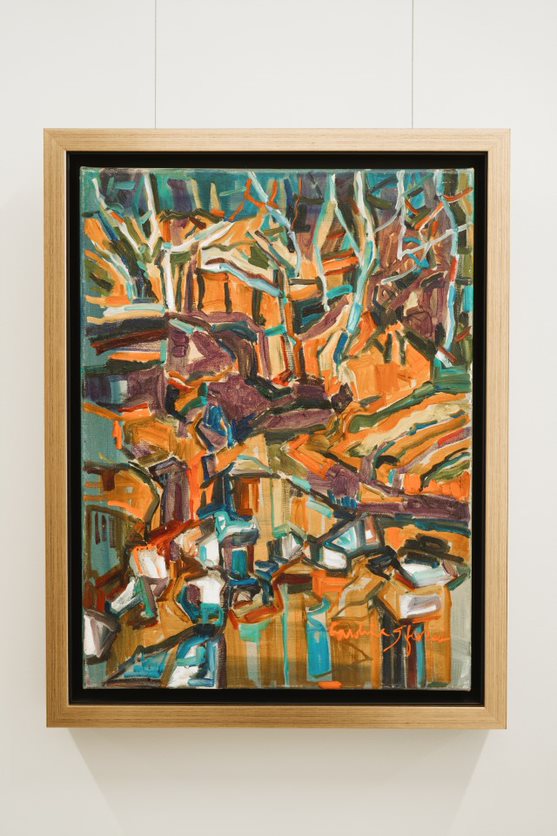
Carolina G. Flores (American, 1948)
Aqueduct Espada Mission
Oil on birch
20 x 20 inches
Exploration: The Journey
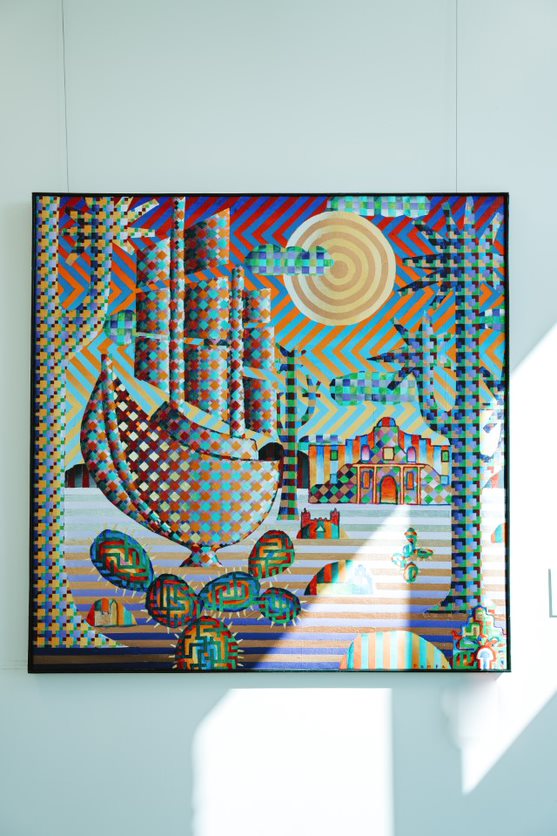
Charles Harrison “Pompa” (American, b. 1974)
Exploration: The Journey
Acrylic on canvas
49 ½ x 49 ½ inches
Nuestra Gente: A Tribute
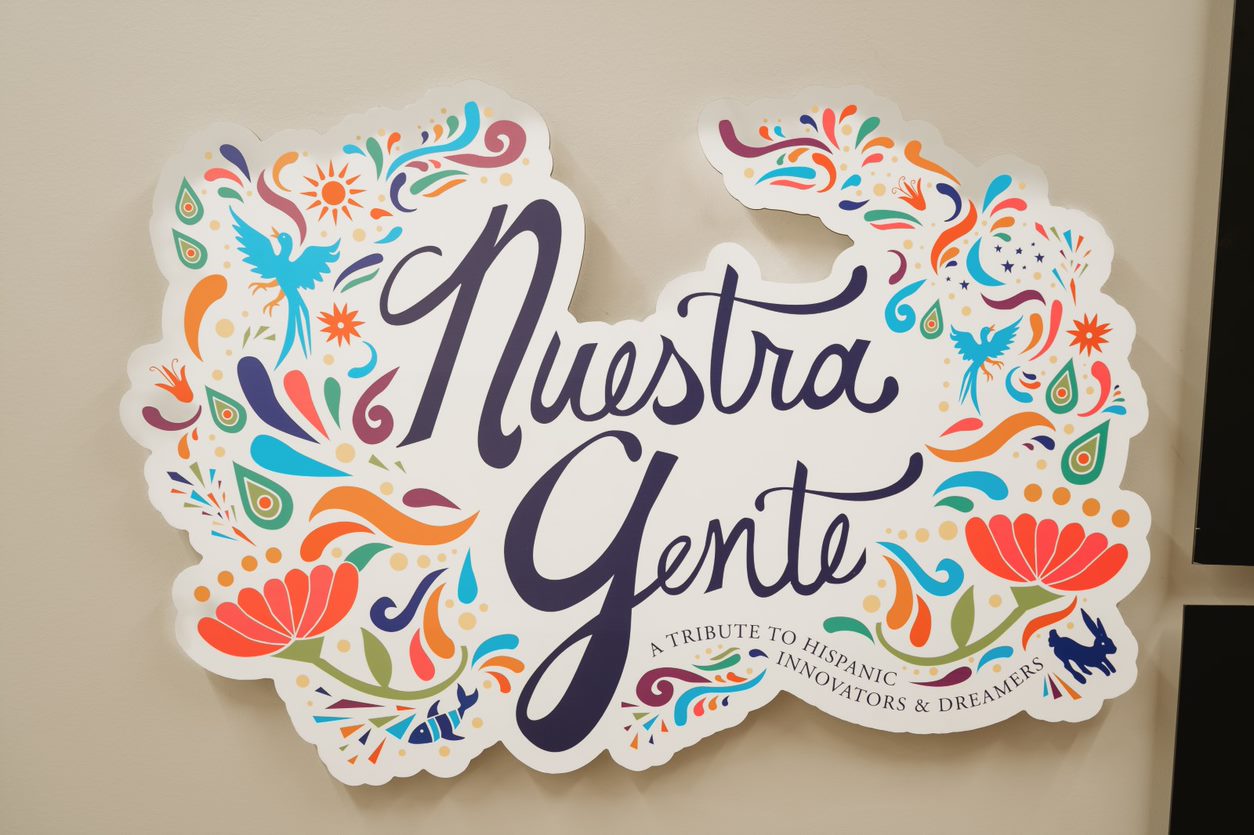
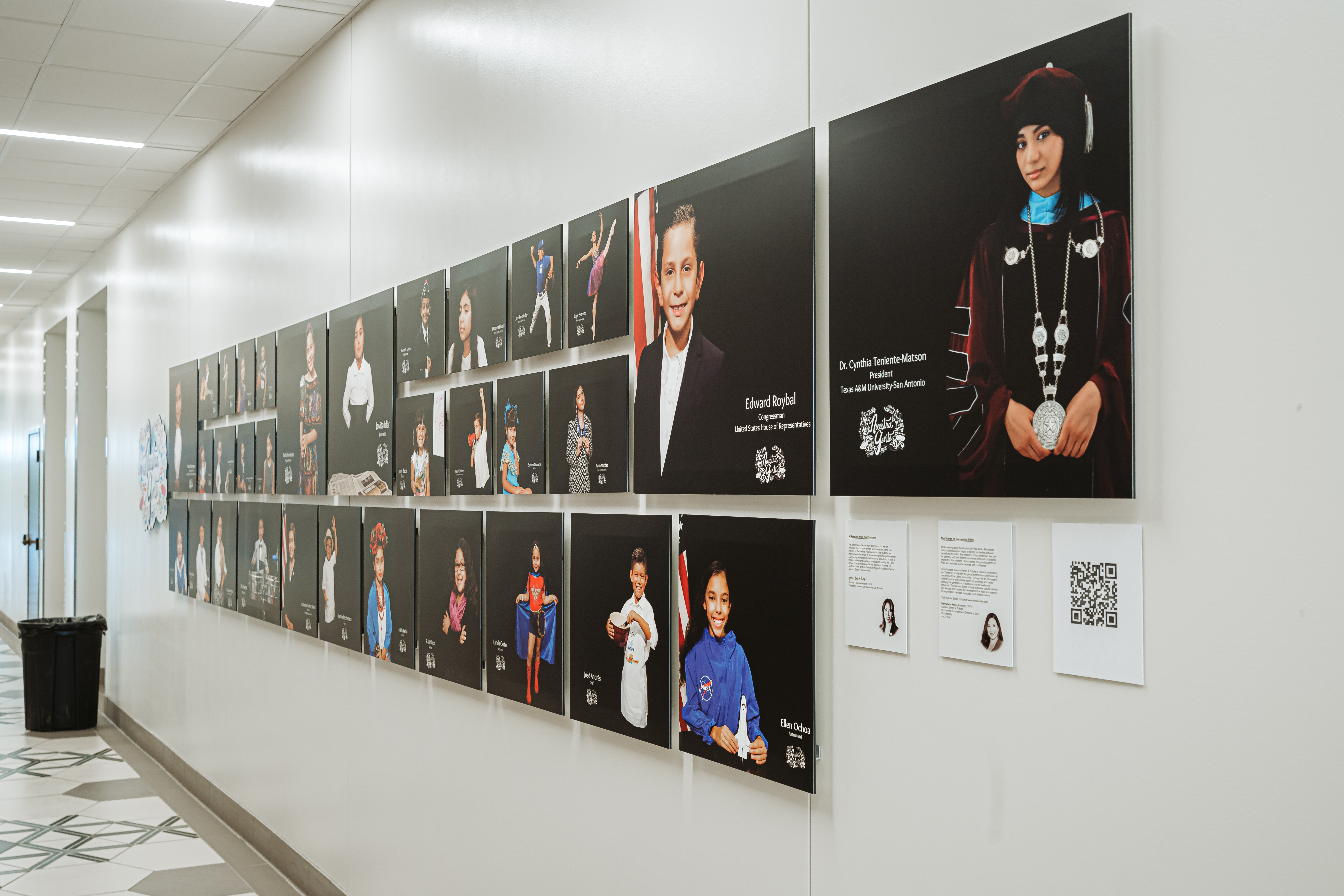
Bernadette Pena
Nuestra Gente: A Tribute
Photography
4" x 21"
Senora Lopez by Lionel Sosa
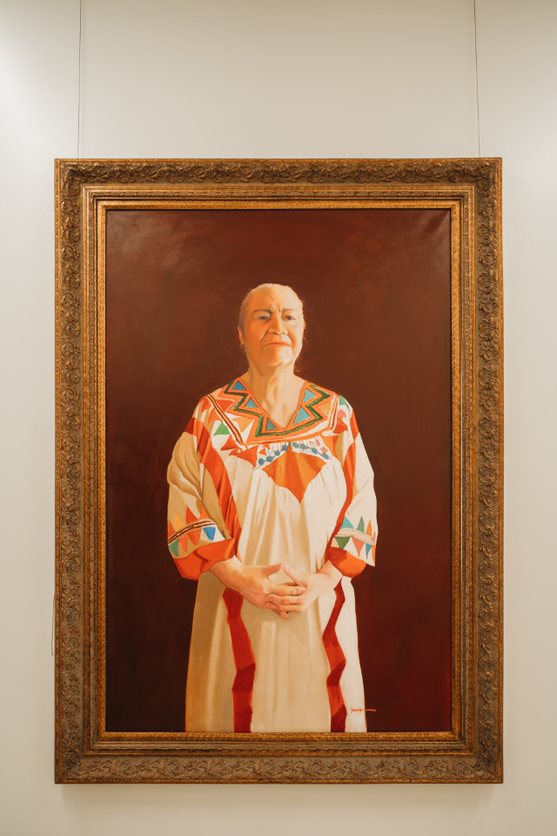
Senora Lopez
Lionel Sosa
Oil on Canvas
50" X 70.5" (Frame included)
Veronica by Lionel Sosa
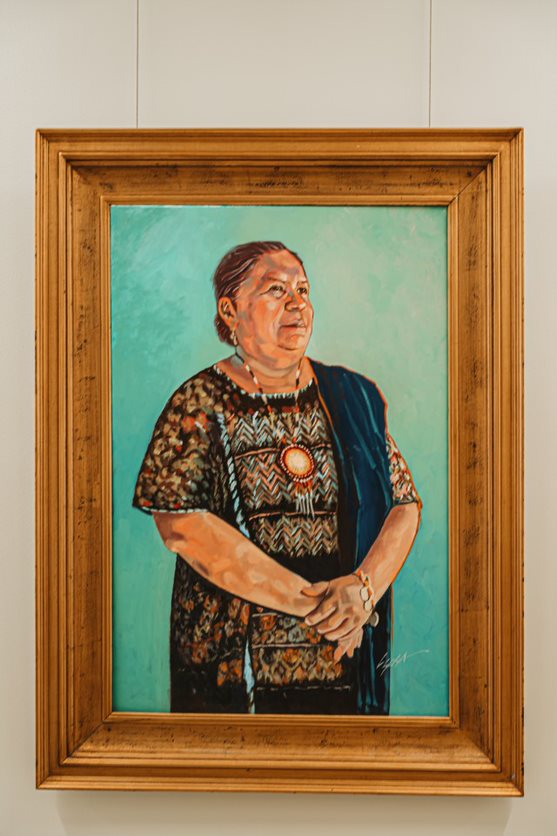
Veronica
Lionel Sosa
33.75" X 45.5"(Frame included)
El Senor Cortez
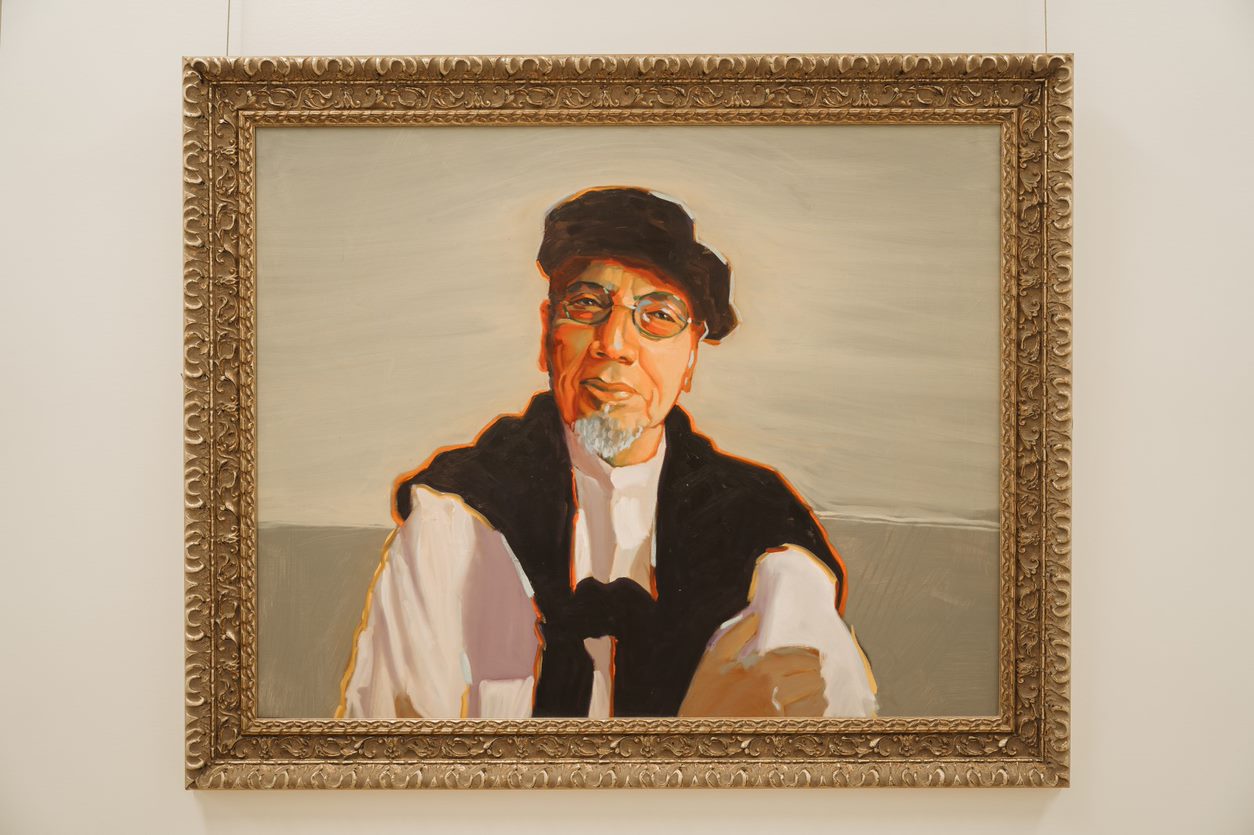
Lionel Sosa
El Señor Cortez
Oil on Canvas
56" x 38"
2nd Floor Artwork
Cinco Misterios de San Antonio
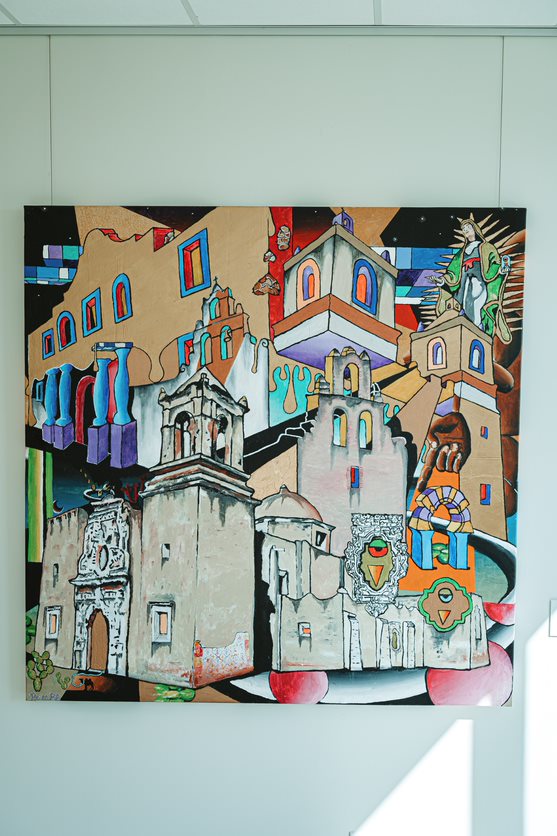
Charles Harrison “Pompa” (American, b. 1974)
Cinco MIsterios de San Antonio
Mixed media and gold leaf on cancas
Signed l.l.
67 inches x 67 inches
Wabi Sabi #582
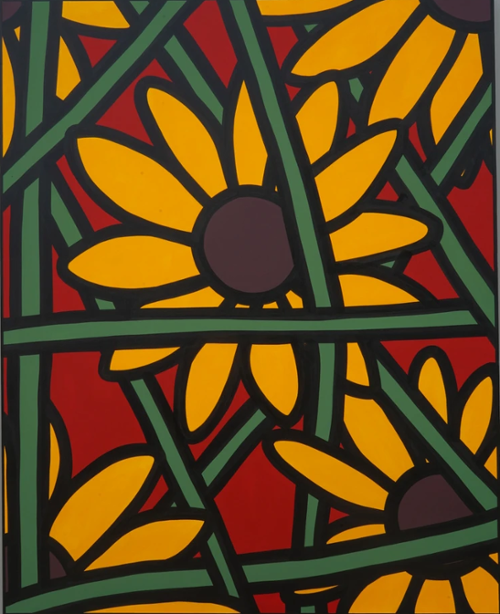
The Work of Albert Gonzales
Albert Gonzales is a San Antonio based artist who has a wide variety of art work. He finds his inspiration in post WWII artists, but also finds himself inspired by the early masters of art such as Van Gogh. Albert is known for his bright colors and his Wabi Sabi philosophy, or the acceptance of imperfection.
Albert Gonzales
Wabi Sabi #582
Fine Art Print on Matte Archival Paper
Signed Albert Gonzales, inscribed (8/25)
20 x 30 inches
Albert Gonzales is heavily influenced by the Japanese philosophy Wabi Sabi. The flowers are meant to represent ourselves, or to accept our imperfections and understand that they make us unique.
Wabi Sabi #509

Albert Gonzales
Wabi Sabi #509
Giclee Print
Signed Albert Gonzales, inscribed (39/75)
11 x 17 inches
Albert Gonzales is heavily influenced by the Japanese philosophy Wabi Sabi, or the acceptance of imperfection. In this piece you can see that not one flower is “perfect”, but each flower is beautiful and unique in each of their own ways. Albert Gonzales uses Wabi Sabi as a means of inspiring the viewer to see the beauty perfectly imperfect.
3rd Floor Artwork
Bat Flights over Nopales
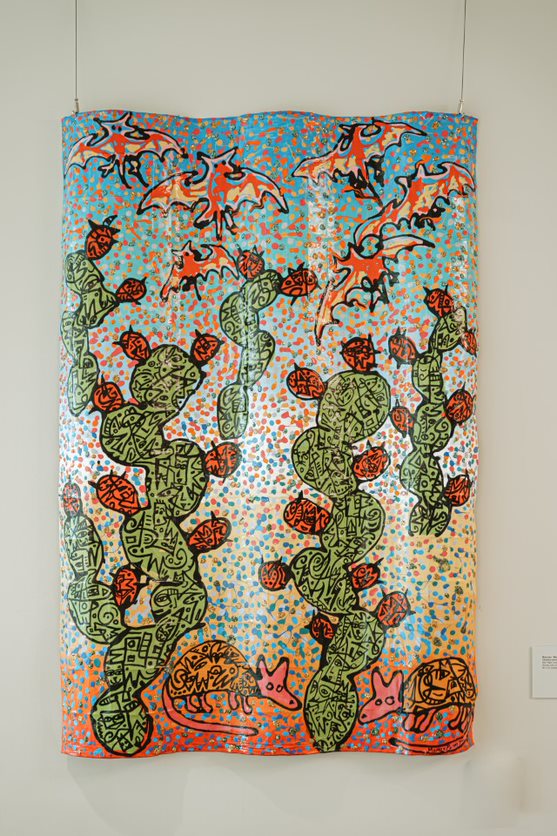
Maureen “Momo” Brown & Charles Harrison (Pompa)
Bat Flight over Nopales
Acrylic and oil over canvas over metal
60 x 42 inches
Ranunculus
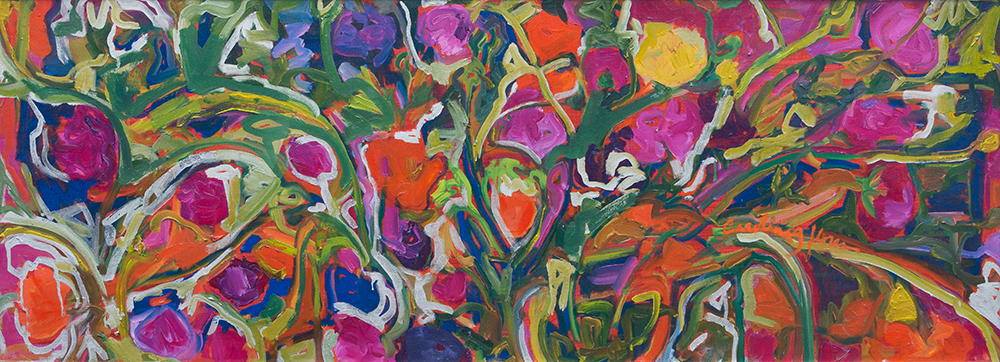
Carolina G. Flores (American, 1948)
Ranunculus
Oil on birch
Signed l.l. on diagonal
24 ¼ x 24 inches
Ranunculus 2
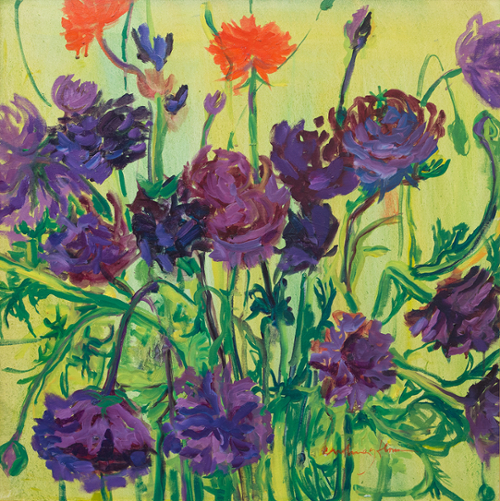
Carolina G. Flores (American, 1948)
Ranunculus
Oil on gesso board
24 x 24 inches
Espuelitas con Granadas
Espuelitas con Granadas
(Larkspurs with Pomegranates)
Oil on birch
30x 24 inches
Hall Alcoves
River Walk at Night

At the heart of San Antonio is the iconic River Walk. The 15-mile waterway is the largest urban ecosystem in the nation and provides the City of San Antonio with countless opportunities to explore, dine and, experience the rich culture of South Texas. The river has always been at the heart of the city. Since 1890, when the first walls were established to control the flow of the river and until now, the river has always been at the heart of the city and its culture. However, a catastrophic storm in 1921 dropped 17 inches of rain into the Olmos Basin and caused 12 feet of water to flood downtown. This centennial flood caused Mayor John Tobin to stimulate the first phase of development on the river to mitigate the challenges of the basin. What started as a flood control project quickly became bundled as an economic development initiative, because of the rivers abundances of resources provided to the community and the economy.
Location: 849 E. Commerce St, San Antonio, Texas 78205 (Downtown section of River Walk)
Baile Folkorico Mexicano
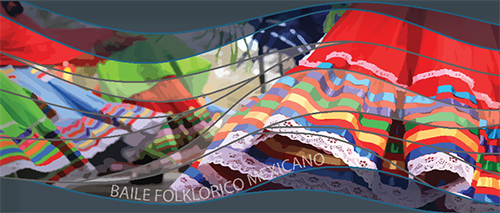
Folklórico is a dance style with as much complexity, variety, and history as the country of Mexico. Folklórico can be traced all the way back to the ceremonial and social dances of indigenous people living in Mexico. In the early 1950s, Amalia Hernandez created what is known today as Ballet Folklórico de México. The Ballet Folklórico is most famous for its promotion of regional dance and incorporation of traditional Mexican dress and Mexican folk music into its routines. With its permanent home at the Palacio de Bellas Artes, one of Mexico City’s most historic venues, the company has developed choreography for 40 ballets and is composed of 76 folk dancers. They have thrilled audiences all over the world with the nation’s diverse, folkloric dance styles and rich, colorful culture with over 5,000 performances, over six decades. The City of San Antonio’s Parks & Recreation department offers Folklórico classes for beginners and experienced dancers. The Tobin Center by the River Walk is where Baile Folklórico Mexicano perform.
View, 2014

The Work of Brad Braune
West Texas native, Brad Braune, honed his inherited talent as a child while painting alongside his artist grandmother. He worked as an architect for some of San Antonio’s most prestigious firms, later designing the inaugural poster for the Texas Folklife Festival in 1981. Braune resides in San Antonio, continuing to paint and teach watercolor painting.
"In my effort to help them students understand and trust the process of planning, timing, and layering, we are totally in the moment as we work. We are not concerned about the end result or whether anyone will be impressed by what we do. Yes, we are struggling most of the time, but we are enjoying and fascinated by the process. We are truly focused on the journey. I thought about how this relates to the way I try to live my life.… I chose to focus on the process.” --- Brad Braune
Brad Braune (American, b. 1951)
View, 2014
Watercolor on paper
Unsigned
45 x 45 inches
“This watercolor was painted in honor of my paternal uncle Alvin Edward Braune, who passed away in 2014. It is a view across the landscape of my family ranch that has been in our family for four generations. The first Braune family emigrated from Germany to Geronimo, Texas (between New Braunfels and Seguin) in the late 1800’s. Two Braune brothers from that original family married two sisters from another German family (Roessling, also from New Braunfels). The two couples traveled to West Texas, near Abilene around 1900 and established the Braune Ranch.
The nearest town to the family ranch is View, Texas. The painting is titled View for the name of the town as well as it being a view across the landscape that will always be in my memory.” --- Brad Braune
Japanese Tea Garden
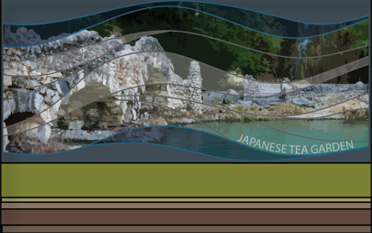
Ray Lambert, former City Parks Commissioner, was given 11 acres of land by Mrs. Emma Koehler, widow of George W. Brackenridge, in 1915. This piece of land is where the Japanese Tea Garden has been located for over a hundred years. In 1920, a small “village” of houses were built in order to serve as the manufacturing and sale of Mexican arts and crafts. Additionally, the houses contained an outdoor restaurant. In 1928, the city of San Antonio invited Kimi Eizo Jingu to live in the villages and he opened the Bamboo Room to serve light lunch meals and tea. The bamboo room operated until 1942, when anti-Japanese ideology swept the country and forced Mr. Jingu to leave his home and the garden. The dedication ceremony of the Japanese Tea Garden was attended by family members of Mr. Jingu and representatives of the Japanese Government. In recognition of the Tea Garden's origin as a rock quarry that played a prominent role in the development of the cement business, as well as its later redevelopment as a garden, the site is designated as a Texas Civil Engineering Landmark, a Registered Texas Historic Landmark, and is listed on the National Register of Historic Places.
Location: 3853 N. St. Mary's St, San Antonio, Texas 78205 (Mission Reach section of River Walk)
Nueva Street Dam
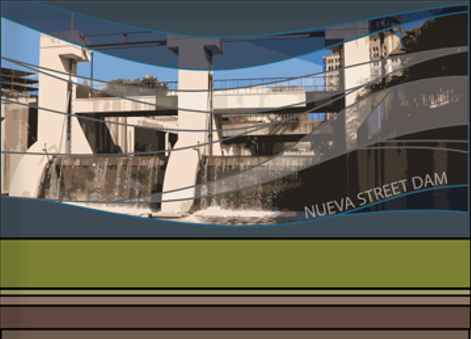
This project, completed in September 1987, consisted of an underground boat repair and storage marina, a leaf gated flood control dam across the San Antonio River, and reconstruction of the Nueva Street Bridge. The new street bridge expanded the existing traffic lanes and pedestrian walkways. An elevated control tower on the west bank of the river is now being fitted to serve as the headquarters of the San Antonio River Tunnel control system. The new marina facility provides the City of San Antonio’s Parks and Recreation Department space to store over 25 barges. The new facility also provides a woodshop, sandblast booth, paint booth, and a small engine repair shop to help maintain the barges. The City of San Antonio paid for all costs associated with the marina while the San Antonio River Authority paid for the balance of the project at a total combined cost of $8.6 million.
Location: E. Nueva St, San Antonio, Texas 78224 (Downtown section of River Walk)
F.I.S.H.
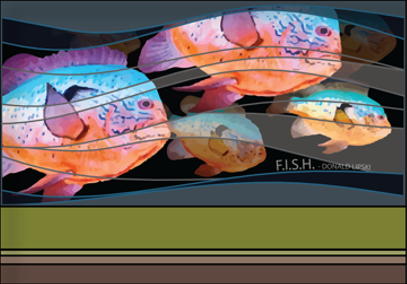
In 2009 the city of San Antonio was in stages, extending its landmark River Walk by 8 miles. Artist Donald Lipski was selected to design a work of public art for the Museum Reach section of the San Antonio River Walk which extends under the rather forbidding darkness of Interstate I-35. There are 25 replicas of the native, long-eared sunfish, hanging under the Interstate. Each fish has about 1,000 L.E.D. lights and have an audience every sunset to watch the “Lighting of the fish.”
Location: S.Pan Am Exp & Camden St, San Antonio, Texas 78215 (Downtown section of River Walk)
San Antonio Museum of Art
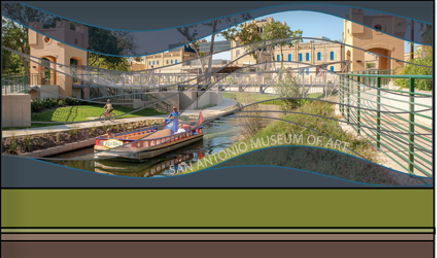
Showcasing a unique collection that spans across 5,000 years, the San Antonio Museum of Art resides in the historic Lone Star Brewer on the Museum Reach of the San Antonio River Walk. The San Antonio Museum of Art opened their doors on March 1st, 1981 after a $7.2 million dollar renovation was made for the new location. Proudly standing as the only encyclopedic museum of fine art in South Texas, the San Antonio Museum of Art has a collection that spans 5,000 years and touches all parts of the globe.
Location: 200 W. Jones Ave, San Antonio, Texas 78215 (Downtown section of River Walk)
VFW Post 76
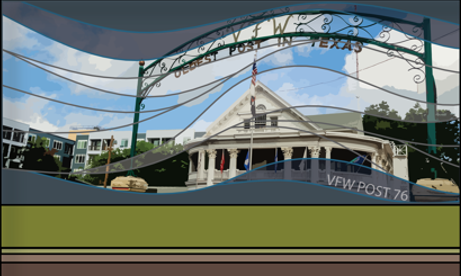
Founded by Veterans of the Spanish-American War, Post 76 was granted Congressional Charter on June 26, 1917 by the National Veteran of Foreign Wars of the United States. The house was officially designated a Texas Historical Landmark in 2017. VFW Post 76, is “the oldest VFW Post in Texas,” along with Department and National Headquarters’ help to protect veterans’ entitlements but, as an organization, it works closely within the community through various service, safety, and educational programs.
Location: 10th St, San Antonio, Texas 78215 (Downtown section of River Walk)
Mission San Juan
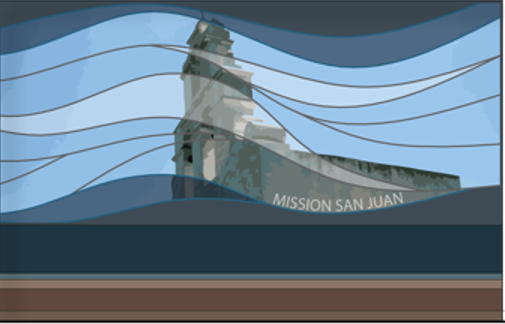
Originating from the woods of East Texas in 1716, Mission San Juan was relocated to the east bank of the San Antonio River on March 5th, 1731. San Juan was known for it’s self-sustaining community. Orchards and Gardens surrounding the outside walls provided grapes, melons, pumpkins and, peppers. Fields located further from the mission also contained corn, beans, sweet potatoes, and sugar cane. Additionally, much of the surrounding land was utilized for raising agriculture. Nearby Rancho de Pataguilla reportedly owned 3,500 sheep and nearly as many cattle. With the materials being gathered from within the mission, there was actually a surplus of inventory. Because of this surplus, Mission San Juan was able to trade and barter as far east as Louisiana and as south as Coahuila, Mexico.
Location: Yanaguana Trail, San Antonio, Texas 78223 (South section of River Walk)
Monarch Butterfly (Flying Route)
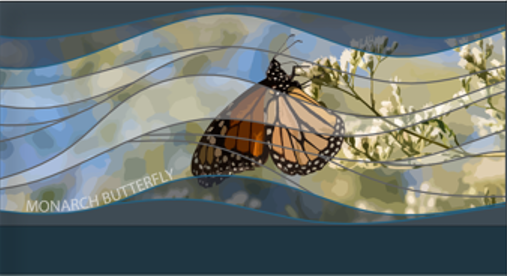
Texas plays a critical part in the conservation of its state insect, the Monarch Butterfly. According to the Parks and Wildlife Department, Texas is situated between the principal breeding grounds in the north and the overwintering areas in Mexico. Beginning with Mayor Ivy Taylor, the City of San Antonio committed to the National Wildlife Federation’s “Mayor’s Monarch Pledge,” by working with partners to enhance habitat for pollinating insects and to educate and encourage the greater community to support this initiative. At Texas A&M University – San Antonio, you will find multiple pollination gardens scattered across the campus. These gardens provide insects, such as the Monarch Butterfly, with a healthy and safe environment for the insects to continue to contribute to the growth of our ecosystem.
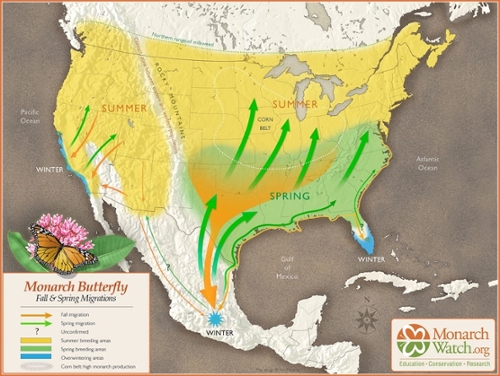
Espada Acequia
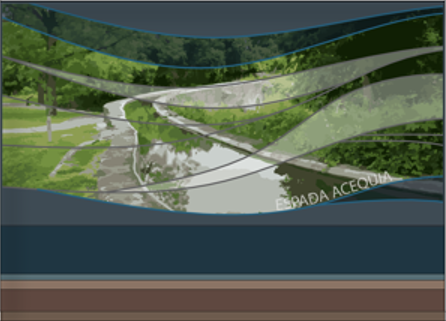
The Espada Acequia was built by Franciscan friars between 1731 and 1745 and was built to supply irrigation water to the lands near Mission San Francisco de la Espada. Because of the hot climate and little access to water, creating an irrigation system was a major key successfully cultivate the nearby land. The four-mile-long acequia (irrigation system) is still used today and is a National Historic Civil Engineering Landmark and a National Historic Landmark.
Location: 9045 Espada Rd, San Antonio, Texas 78214 (South section of River Walk)
Whispers
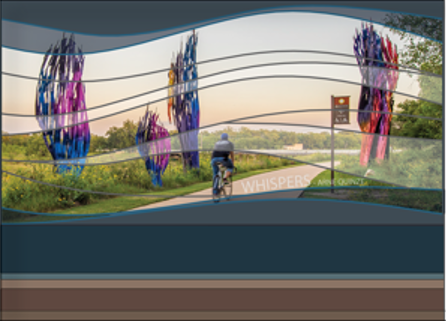
This monumental installation connects the River and Mission San Juan, serving as a portal between the two; named “Whispers” because the pieces “speak” to each other in their movement and color. This open air public work was designed and created by Arne Quinze, a Belgian contemporary artist, painter and sculptor. Always seeking inspiration from the direct environment in which his work is placed, Quinze aims with “Whispers” to connect and draw attention to the unique flora that characterizes the San Antonio region. As such, his multi-dimensional sculpture references abstract connections to the mesquite, small oaks, and pecan trees native to the area. The color scheme of “Whispers” is a blend of Quinze’s signature fluorescent red-orange and a beautiful mixture of blues and purples referencing local wildflowers, such as the bluebonnet.
Location: 8818 Mission Rd, San Antonio, Texas 78214 (South section of River Walk)
Tree of Life
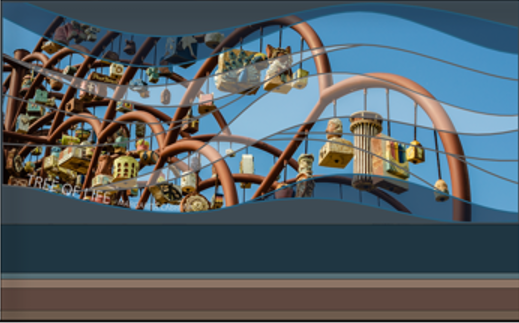
Margarita Cabrera was born in Monterrey, Mexico and relocated to the United States with her family looking for better opportunities when she was only 10 years old. Her work is centered on social- political issues within communities addressing different aspects of immigration, violence, and the economic relationship between the United States and Mexico.
This massive work of art towers 40 feet tall and stretches 80 feet wide. The Tree of Life, or Árbol de Vida, is the base of over 750 clay sculptures made by over 700 individuals. These individuals had very little art experience and had to work closely with Margarita Cabrera This piece of art visually tells the story of Misión Espada and the importance it played in the early days of the ranching industry. Mission San Francisco de la Espada is currently identified as the only Spanish colonial mission in the United States which maintains contact with its original ranching operation: Rancho de las Cabras. The legacy of ranching in Texas can be attributed to the initial efforts of the mission ranches.
Location: (South section of River Walk)
